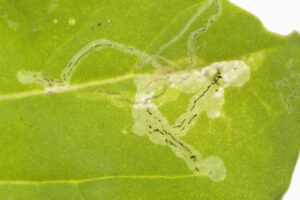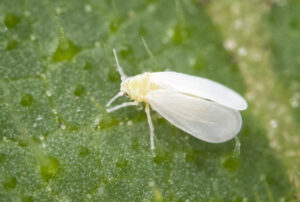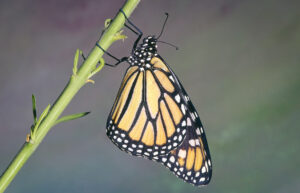New ways to control pests
By Denis Crawford
It’s been a while (May 2019) since I wrote about the biochemical arms race being waged between plants and insects, and how some insects co-opt certain plant chemicals for their own purposes. Recent research has uncovered some particularly intriguing adaptations.
Plants produce phytochemicals such as alkaloids, cardenolides, isoflavonoids, and terpenes to protect themselves from herbivores. The phytochemicals range in toxicity from distasteful to poisonous – depending on the plant involved and the herbivore trying to eat it. For example, the sap of milkweeds (Asclepias spp.) contains cardenolides which are poisonous to many animals (including humans).
The cardenolides in milkweed sap has most famously been co-opted by the Monarch butterfly (Danaus plexippus). Larvae of the Monarch butterfly ingest the cardenolides while feeding on milkweed leaves. The larvae are immune to the effects of the cardenolides and the toxin protects them from predators such as birds. The larvae sequester the cardenolides so that the phytochemicals remain within their bodies even as they pupate, and they retain that biochemical protection as they emerge as adult butterflies. As an extra protection, the larval, pupal and adult life stages of the Monarch butterfly are brightly coloured as a warning to predators that they may taste foul if eaten.

(Supplied by Denis Crawford of Graphic Science)
Recent research shows that ‘milkweed butterflies’, closely related to Monarch butterflies, have a novel way of using other plant-derived chemicals – pyrrolizidine alkaloids. It is the males that almost exclusively gather these chemicals, which they extract from the dried leaves of many plant species in the families Apocynaceae, Asteraceae, Boraginaceae, and Fabaceae. The male butterflies then use the alkaloids to synthesise a pheromone to entice females during an elaborate courtship routine.
This is not the case with Monarch butterflies, as they don’t have an elaborate courtship and male butterflies simply chase down females for mating, so they have no need for pheromones. Intriguingly, both males and female Monarchs have been observed feeding on the withered leaves of various plants, presumably to extract pyrrolizidine alkaloids. A citizen science program (Monarch Rx) has begun in the United States to answer the question of “why?”.
Some plants, including cruciferous plants, defend themselves from insect herbivores by using sulfur-containing glucosinolates. When activated by hydrolysis, glucosinolates form toxic compounds such as isothiocyanate. Recent research had found that the silverleaf whitefly (Bemisia tabaci), a highly polyphagous pest, has found a way around these chemical defences. The whiteflies prevent the activation of the glucosinolates, with enzymes that convert glucosinolates into inactive desulfoglucosinolates. This all happens within the gut of the insect.
Scientists now know how the whitefly does it – the insect has hijacked a plant-derived gene (BtPMaT1). Work has already begun on turning this knowledge into a new way to control the pest. Genetically modified tomato plants which produce small interfering RNAs that silence BtPMaT1, and impairs the whiteflies’ detoxification ability, have been trialled. As the authors of one paper (Xiaet al) concluded: these findings reveal an evolutionary scenario whereby herbivores harness the genetic toolkit of their host plants to develop resistance to plant defences, and how this can be exploited for crop protection.

(Supplied by Denis Crawford of Graphic Science)
Adaptations happen over time, sometimes millennia or more, but things are sped up in organisms such as insects which have multiple generations per year. An adaptation of great concern to horticulturists is resistance to insecticides, which can develop within a decade or so. In last month’s Pest Files, I wrote about the arrival of the polyphagous serpentine leafminer (Liriomyza huidobrensis) which had developed resistance to many chemicals in other countries. Very recently another leafminer, the American serpentine leafminer (Liriomyza trifolii), was detected in the Kununurra area of northern Western Australia. This most recent arrival is the most resistant of the leafminer pests of concern.
As I mentioned last month, there is already a group of scientists working on these leafminer pests, and there are many species of tiny wasps already here, that will help control them. We just need to not kill them with broad-spectrum insecticides. Integrated pest management (IPM) is surely the way to go, as this strategy was developed precisely because insects were developing resistance to insecticides.
Main photo: Why do monarch butterflies feed on dried leaves? (Supplied by Denis Crawford of Graphic Science)
References: Xia et al., 2021. Whitefly hijacks a plant detoxification gene that neutralizes plant toxins. Cell 184, 1693–1705

